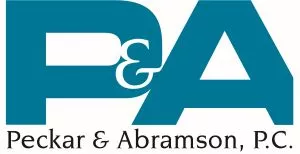The Department of Labor ("DOL") will soon issue final rules governing payment of workers on federal construction projects. Key changes include:
- Restructured calculation of "prevailing wages";
- Incorporation of anti-retaliation measures to protect victims of violations; and
- Expanded rights to back wages where violations are found.
The changes come as billions of federal dollars are being poured into new clean energy investments and public works projects through the Inflation Reduction Act and the Infrastructure Investment and Jobs Act.1
> The new DOL rule is the first update in 40 years to the formula used to set "prevailing wages" under the Davis-Bacon Act ("DBA") and Related Acts Regulation (collectively, the "DBRA"). The changes span over 800 pages; this alert will only explain the DBRA's key changes.
BACKGROUND:
The DBRA2requires the payment of prevailing wage rates and fringe benefits to laborers and mechanics on federal or federally-assisted construction contracts.3The DOL's prevailing wage rate includes local wages and fringe benefits paid to workers under their labor category and in their geographic area (locality). By requiring the payment of minimum prevailing wages, Congress sought to "ensure that Government construction . . . would not be conducted at the expense of depressing local wage standards."4The Supreme Court has called the DBA "a minimum wage law designed for the benefit of construction workers."5The DOL states that it is updating the '81-'82 regulations because they "were mistaken or ultimately resulted in outcomes that are increasingly in tension with the DBA statute itself."6
CHANGES:
Calculation Process Changes:
The changes include several elements intended to improve the information used for wage determinations and to speed up the determination process. To this end, the new rule gives the Wage and Hour Division (WHD) Administrator authority to adopt state or local wage determinations as the DBA prevailing wage in certain circumstances.7
The DOL currently utilizes a survey process and designates a rate as "prevailing" if more than 50% of workers in a locality are paid the same amount. If the survey does not produce sufficient responses, the prevailing rate is the weighted average. That approach is changing.
The new rule returns to the "three-step" method in effect from 1935 to 1983. Now, when there is no one wage paid to a majority of workers in a classification, a wage is prevailing if paid to at least 30% of workers ("the 30-percent rule"). The DOL resorts to a weighted average only if there is no one wage rate paid to 30% of workers in a locality. The DOL says this method reduces the reliance on weighted averages and allow the agency to set an official "prevailing wage" more frequently. Reverting to the previous definition also means the prevailing wage on federal projects would more closely align with union scale wages.
Anti-Retaliation Provisions:
The new rule also includes anti-retaliation provisions.8 The language seeks to protect workers who raise concerns about payment practices or assist agencies or the DOL in investigations of termination and other adverse employment actions.
Back Wages Exposure:
Finally, the DOL clarifies and strengthens the procedures for recovering back wages by providing an option for cross-agency withholdings.9The DOL also creates a mechanism through which contractors will be required to consent to cross-withholding for back wages owed by affiliated entities (for example, entities that share a controlling shareholder or are joint venturers).
Inflationary Concerns Dismissed:
One historical parallel between now and 1982-the last large-scale update to DBRA-is concern about the inflationary effect of increased wages. In the proposed regulation, the DOL signaled it would likely disregard comments challenging the inflationary effect of the rule: "[T]he 'basic purpose of the Davis-Bacon Act is to protect the wages of construction workers even if the effect is to increase costs to the [F]ederal Government.'"10In the new rule, the DOL did just that, stating that "even if concerns about an inflationary effect on government contract costs or speculative effects on the national macro economy were used to justify eliminating the 30-percent rule in 1982, the DOL does not believe such reasoning now provides a persuasive factual basis or legal requirement to maintain the current majority rule."11As inflation has fallen by nearly 6% since comments were due, the DOL may have also not seen the pressing need to consider that factor.
CONCLUSION AND PATH FORWARD:
The final rule will take effect 60 days after publication in the Federal Register, but the draft will likely be included without change and provides affected entities with DBRA's key provisions. Contractors are advised to consult with counsel regarding the implications of the proposed amendments and how to best navigate it.
Footnotes
1 See H.R. 3684. 117th Cong., 1st sess., Enrolled Bill December 2, 2021.
2 Enacted in 1931.
3 See 40 U.S.C. sec. 3142.
4 Determination of Wage Rates Under the Davis-Bacon & Serv. Cont. Acts, 5 Op. O.L.C. 174, 176 (1981) (citation and internal quotation marks omitted).
5 United States v. Binghamton Constr. Co., 347 U.S. 171, 178 (1954).
6 87 Fed. Reg. 15698.
7 DBRA § 1.3.
8 The changes are at § 5.5(a)(2), and (b)(5) (the Contract Work Hours Safety Standards Act (the "CWHSSA")), and in a new section of part 5 at § 5.18
9 § 5.5(a)(2), and the CWHSSA, § (b)(3)
10 87 Fed. Reg. 15,705.
11 Proposed rule at 72.
The content of this article is intended to provide a general guide to the subject matter. Specialist advice should be sought about your specific circumstances.




